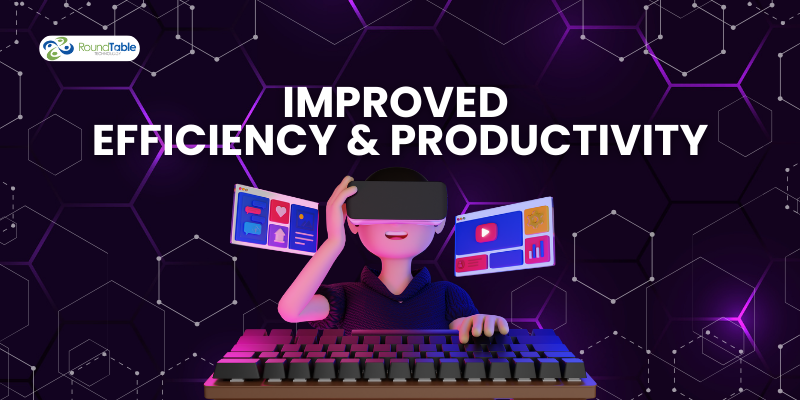Smart Budgeting: Why More Nonprofits are Turning to Outsourced IT Solutions
In the nonprofit sector, where every dollar counts, managing operational costs efficiently is critical to sustaining and expanding mission-driven...
4 min read
.jpg) Justin Brown
:
Apr 9, 2024 3:26:24 PM
Justin Brown
:
Apr 9, 2024 3:26:24 PM

Effective IT budgeting transcends mere number crunching; it is a strategic endeavor that aligns an organization's technological needs with its overarching mission and values. The importance of IT in amplifying a nonprofit's reach and efficiency cannot be overstated.
From streamlining operations to enhancing communication with stakeholders, technology plays a pivotal role in every nonprofit's success story. Yet, without a clear roadmap for IT budgeting, organizations risk squandering precious resources on ineffective solutions. This blog aims to demystify the IT budgeting process, providing a step-by-step guide to help nonprofits make informed decisions that fuel progress and amplify impact.
The cornerstone of effective IT budgeting is a deep understanding of your organization's specific needs. Begin by conducting a thorough assessment of your current technology landscape, identifying areas where your IT infrastructure aligns with or falls short of supporting your mission's objectives. Engage a cross-section of your team in this analysis to ensure all perspectives are considered, from frontline staff to top management. This inclusive approach not only fosters organizational buy-in but also uncovers diverse insights that might otherwise be overlooked.
Once the assessment is complete, prioritize your IT needs based on their potential to enhance operational efficiency and further your mission. This might mean investing in robust data management systems, upgrading cybersecurity measures, or adopting new communication tools. By systematically categorizing these needs as either critical or nice-to-have, nonprofits can direct their resources more effectively, ensuring that essential operations are not compromised by budgetary constraints.
We at RoundTable Technology like to use a Benefit vs Complexity Matrix to help find low hanging fruit and prioritize tasks by importance and complexity.
Crafting a realistic IT budget requires a nuanced understanding of your nonprofit's financial landscape coupled with a clear vision of its technological aspirations. Start by delineating all potential costs, including not just initial outlays for hardware and software but also ongoing expenses like maintenance, support, and training. Factor in a contingency allowance to cover unexpected issues, ensuring that your budget is both comprehensive and flexible.
Transparency is key in this phase. Document and justify each budget item, linking it directly to your organization's strategic objectives. This clarity not only aids in internal decision-making but also strengthens the case when seeking external funding or board approval. Remember, a well-justified IT budget is an invaluable tool in advocating for the resources your nonprofit needs to thrive in the digital realm.
Securing additional funding can significantly ease the IT budgeting process for nonprofits. Investigate grants specifically designed to support technology initiatives in the nonprofit sector. Organizations like TechSoup offer a variety of resources, including access to donated and discounted technology products and relevant grant opportunities. Similarly, the Nonprofit Technology Network (NTEN) provides guidance on leveraging technology effectively within nonprofit organizations, which can be invaluable in your planning and implementation phases.
In addition to grants, consider forming partnerships with technology companies and tapping into corporate philanthropy programs. Many corporations are eager to support nonprofits through in-kind donations, including software, hardware, and technical expertise. These partnerships can not only augment your IT capabilities but also foster long-term collaborations that benefit both parties.
In the quest for affordable IT solutions, nonprofits should focus on scalability and sustainability. Cloud-based services, for instance, offer flexible, cost-effective options for data storage, collaboration, and communication. They reduce the need for expensive hardware and allow organizations to pay only for the resources they use. Similarly, open-source software can provide robust functionality without the hefty price tags associated with proprietary software.
Yet, selecting these solutions requires careful consideration. Assess their compatibility with your existing systems, ease of use for your staff, and the level of vendor support available. Online forums and communities, such as those hosted by Tech Impact, can offer insights and reviews from other nonprofits that have faced similar decisions. By choosing wisely, nonprofits can harness powerful IT tools that boost efficiency without draining their budgets.
Technical debt—a concept reflecting the future costs incurred by choosing quick, easy, or cheap technology solutions over better, more sustainable ones—can be a significant drain on nonprofit resources over time. Addressing this issue proactively involves regular audits of your IT infrastructure to identify and rectify systems or software that are outdated, inefficient, or vulnerable to security risks.
Investing in the modernization of your IT infrastructure can seem daunting but pays dividends by reducing maintenance costs, improving efficiency, and minimizing security risks. Allocating budget toward retiring legacy systems and adopting modern technologies can ultimately lead to cost savings, better performance, and enhanced service delivery. This forward-thinking approach not only aligns with best practices in IT management but also demonstrates a commitment to stewardship and sustainability that can resonate with donors and stakeholders.
Effective IT budgeting is an ongoing process, requiring regular review and adjustment in response to evolving needs, technological advances, and fiscal realities. Establishing a routine for monitoring IT expenditures and their impact on organizational goals is essential. This can help identify areas where investments are paying off, as well as opportunities for reallocation or optimization.
Engaging in regular dialogue with IT staff, vendors, and department heads can provide valuable feedback on the effectiveness of current IT spending and insight into emerging needs. This collaborative approach ensures that IT budgeting remains aligned with both day-to-day realities and long-term strategic objectives, enabling your nonprofit to adapt nimbly to new challenges and opportunities in the tech landscape.
For nonprofits in today's digital world, mastering IT budgeting is not merely an administrative task—it's a strategic imperative that can significantly enhance organizational effectiveness and impact. By thoroughly understanding IT needs, setting realistic budgets, exploring funding opportunities, choosing cost-effective solutions, addressing technical debt, and continually monitoring and adjusting IT spending, nonprofits can turn technology investments into powerful tools for mission advancement. With these strategies, informed by RoundTable Technology's expertise, your organization can navigate the complexities of IT budgeting with confidence, ensuring that every dollar spent on technology yields maximum benefit for your cause.
Don’t know where to start? Talk to a Solutions Consultant to see how to get the most out of your budgeting.

In the nonprofit sector, where every dollar counts, managing operational costs efficiently is critical to sustaining and expanding mission-driven...

Navigating the intricate web of technology and cybersecurity can often feel like steering through a labyrinth without a map. At RoundTable...

Nonprofit organizations play a crucial role in addressing social and humanitarian issues, relying on limited resources to make a significant impact...